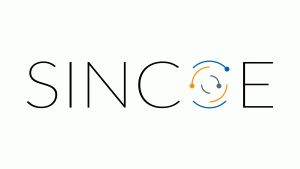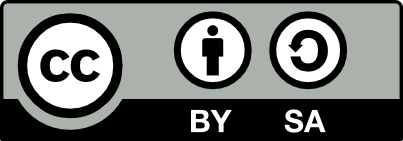Home » ResourceType (Page 2)
Category Archives: ResourceType
Social and Environmental Innovation Challenge. Extended description
Objectives: The aim of this Pilot was to raise students’ awareness of the level of development of their skills in innovation, creativity, critical thinking and teamwork. Methods: Challenge + SINCOE Survey To carry out this Pilot, a face-to-face project was carried out through a “challenge” that lasted 6 weeks (1 session per week). This project […]
Social and Environmental Innovation Challenge
Keywords: Social and Environmental Innovation Challenge Promote the social and environmental commitment of students through innovation. To sensitize students about the level of development of their social and environmental innovation skills For 6 weeks, a group of students carried out a”Social and Environmental Innovation Challenge” The project involved: Students identified problems, developed robotic solutions, built […]
Unveiling Synergies: Sincoe@ Self-Evaluation, Belbin Dynamics, and Cultivating Effective Team Interactions. Extended description
Objectives: This pilot focuses on this aspect of the SINCOE project: Methods: We will use a highly participatory workshop methodology that will allow you to develop knowledge, skills, and attitudes, but above all, to practice them frequently in the classroom so that you can receive feedback and develop actions to improve your competencies. Environment: In […]
Unveiling Synergies: Sincoe@ Self-Evaluation, Belbin Dynamics, and Cultivating Effective Team Interactions
Keywords: Self-peer assessment, Sincoe@ tool, Belbin team roles, collaborative leadership, teamwork competencies. This experience empowers students with essential teamwork competencies through the implementation of the Sincoe@ self-peer assessment tool and the exploration of Belbin team roles. By fostering self-awareness, peer feedback, and collaborative leadership skills, the initiative sought to develop students’ abilities to thrive in […]
Supply Chain Management course group work self-evaluation. Extended description
Objectives: In the pilot, the objective was to make the students aware and think about various innovation competencies that are useful both in studies and in working life. By going through the given statements and thinking about how the innovation-promoting abilities described in the statements have come to the fore in their group work for […]
Supply Chain Management course group work self-evaluation
Keywords: Assessment, innovation competence (critical thinking, creativity, initiative, teamwork, networking), project-based learning, online, motivation, feedback, complementary evaluation What and Why: The pilot was conducted on 2nd year Industrial Management and Engineering students’ obligatory course Supply Chain Management (3 credits). The students on the course were future sales engineers, which was an interesting target group. In […]
Strategic Sourcing course ‘procurement year clock’ group work self-evaluation. Extended description
Objectives: In the pilot, the objective was to make the students aware and think about various innovation competencies that are useful both in studies and in working life. By going through the given statements and thinking about how the innovation-promoting abilities described in the statements have come to the fore in their group work for […]
Strategic Sourcing course ‘procurement year clock’ group work self-evaluation
Keywords: Assessment, innovation competence (critical thinking, creativity, initiative, teamwork, networking), project-based learning, online, motivation, feedback, complementary evaluation What and Why: The pilot was conducted on 2nd and 3rd year Industrial Management and Engineering students’ optional course Strategic Sourcing (5 credits). These students have chosen procurement and logistics as their specialization area. In the course, the […]
Innovation competences as a guideline for course design – teacher´s innovation competences
When teachers define the learning objectives for the upcoming course and for the course participants, it is assumed, most likely quite correctly, that the teachers already have obtained those skills themselves that they are teaching. Teachers do master the subject matter, but in my pilot, I wanted to check, how can I in my course […]
Innovation competences as a guideline for course design – teacher´s innovation competences. Extended description
When teachers define the learning objectives for the upcoming course and for the course participants, it is assumed, most likely quite correctly, that the teachers already have obtained those skills themselves that they are teaching. Teachers do master the subject matter, but in my pilot, I wanted to check, how can I in my course […]
Influence of the Sincoe Training on Self-Assessment
Goal: Examination of the influence of the Sincoe training videos on self-assessment. Target group: 1st Semester Life Sciences students. Age: 18 to 40. Situation Environment: 50% online-lecture, 50% face-to-face. Methods: At the beginning of the semester, only the first two SINCOE training videos are used. Students then evaluate their innovation skills using the SINCOE assessment […]
Influence of the Sincoe Training on Self-Assessment. Extended description
Goal: Examination of the influence of the Sincoe training videos for self-assessment of innovation competence combined with the regular content of the course (including learning units on the topics of perception and personality traits) on self-assessment with the Sincoe assessment tool. Target group: 1st Semester Life Sciences students. More than 60 participants. Age: 18 to […]
Unveiling Synergies: Sincoe@ Self-Evaluation
Keywords: Self-assessment, Sincoe@ tool This self-assessment was conducted in a course about management implications of the development and use of information and communication techniques (ICT) in the marketing domain. Students should reflect on their relationship to and their personal competencies in “innovation”. In its methodology, the SINCOE assessment was not typical for the structure of […]
Unveiling Synergies: Sincoe@ Self-Evaluation. Extended description
Objectives: This pilot focuses on this aspect of the SINCOE project: Methods: This survey was planned as an “injection”, in a course that is dominated by lectures with some short excercises. It was “injected” with a in the 6th week of 13 weeks, after introducing into the topic of the relationship between marketing and new […]
Find out things that affect student’s motivation. Extended description
Objectives The aim is to find out about the student’s motivation. What things improve, what weakens motivation? Is motivation related to something else related to studying? What kind of study skills do students have? What kind of skills students have for critical thinking, creativity and teamwork. Do students have challenges with their own life management […]
Find out things that affect student’s motivation
Keywords: motivation, study skills, innovation competences, critical thinking, creativity, co-learning The formative questionnaire is designed to provide a wide range of information about the student’s motivation and the issues affecting motivation. The form also collects information on the student’s study skills, a few innovation competencies and different ways to support learning (face-to-face or online environment). […]
Use Innovation Competence Self-Assessment as a basis for a conversation during tutoring. Extended description
Objectives The teacher has a conversation with each student separately to help them improve their Innovation Competences. The conversation is based on only couple of chosen Innovation Competence statements which he/she has given to the students. Methods The students fill in a form with two-three questions from each category of Innovation Competences. The teacher discusses their […]
Use Innovation Competence Self-Assessment as a basis for a conversation during tutoring
Keywords: ASSESSMENT, tutoring, motivation Before goal and development dialogue with students a teacher gives them the Innovation Competence self-assessment task to answer. It is better to choose the most relevant of those and not to use the whole list of allegations. The students can concentrate on those most relevant to their study-field and level of […]
Develop students critical thinking and creativity by means of artificial intelligence. Extended description
Objectives To teach how to use artificial intelligence wisely as a part of the journalistic work. And how to use it with critical thinking. Also, to encourage students that it is not a threat to their creativity, on the other hand, it can improve it. Methods Three teaching sessions by a journalism teacher to students […]
Develop students critical thinking and creativity by means of artificial intelligence
Keywords: METHODS, ROLE, exercise, critical thinking, creativity, co-teaching, co-learning, innovativeness The objective was to create sessions of demonstrating AI in a professional work and analyzing the results in a conversation. The demonstrations were real-time tests in front of the class by a teacher. Students realizes they need to be critical to artificial intelligence when they […]




